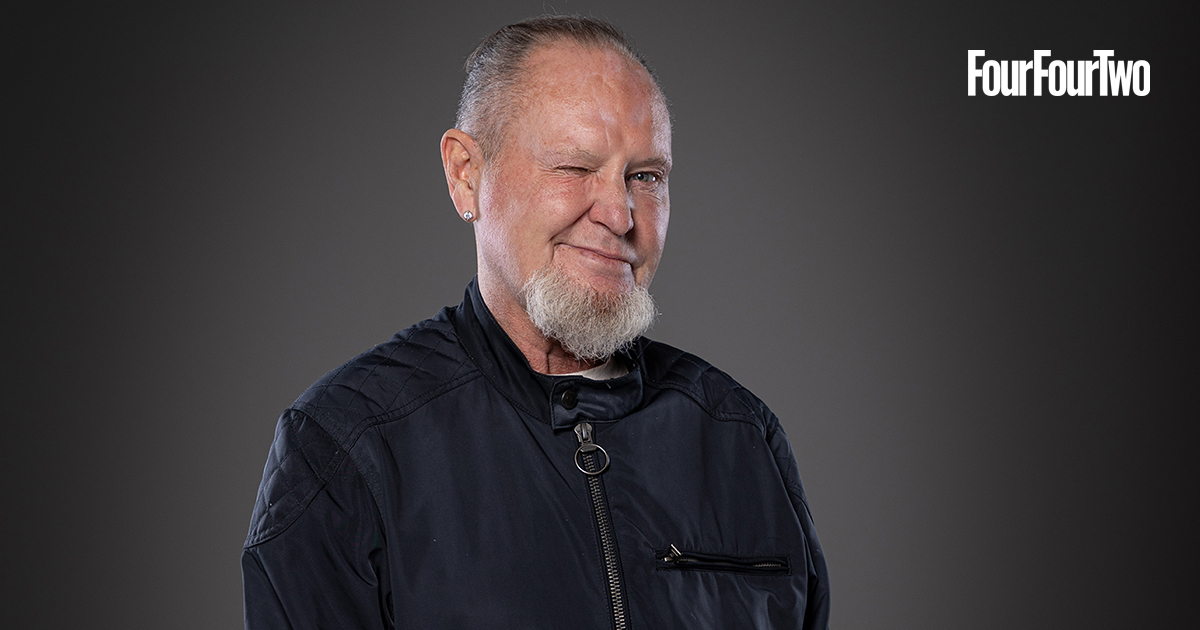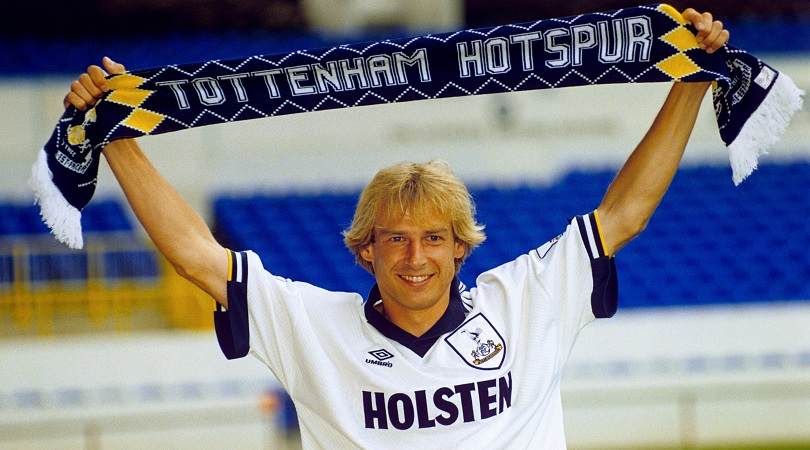
Football's most shocking transfers
Whether it’s big-name players making a sudden exit, brave souls crossing the great divide between fierce rivals, eyeball-dazzlingly big fees or curious combinations of player and club that make you think “Why’s HE going THERE?”, here are the most shocking transfers in football history...
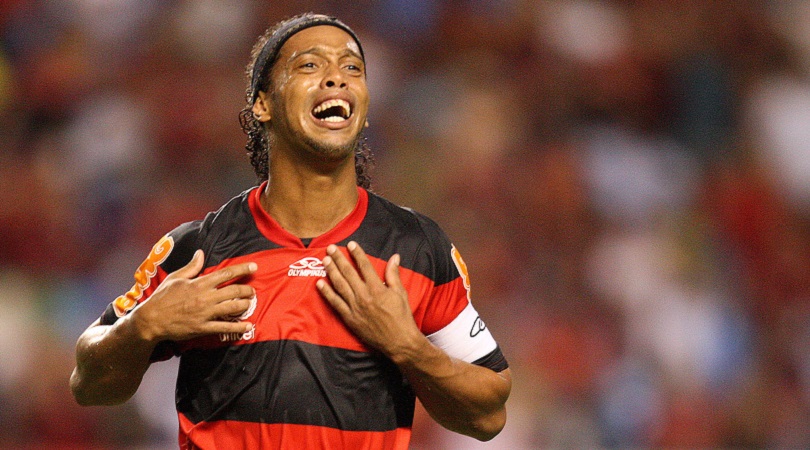
56. Ronaldinho (Milan to Flamengo, 2011)
Fee: Undisclosed
When Ronaldinho was sick of Max Allegri at Milan, he asked his brother and agent Roberto de Assis to find a club in Brazil after 10 years away.
Palmeiras, Grêmio and Flamengo were all interested in the five-time world champion (as were Blackburn). The former sent coach Luiz Felipe Scolari to talk to Assis and convince him of the deal, while Grêmio put speakers on the stadium’s pitch to celebrate with their fans after claiming to have had Ronaldinho's comeback confirmed. It was premature: in the end, the Brazilian ace signed for Flamengo instead.
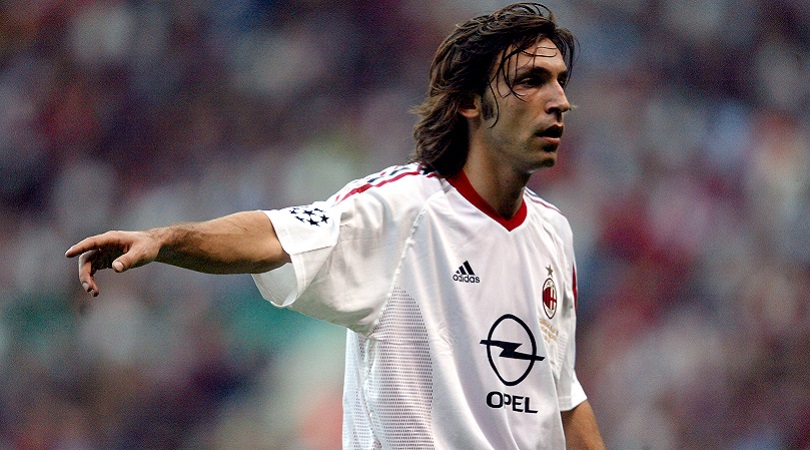
55. Andrea Pirlo (Inter to Milan, 2001)
Fee: Part exchange
While it may now seem odd, Pirlo should actually have been an Inter legend. The Nerazzurri signed him from Brescia in 1998, back when he didn’t have a beard and played as a No.10. A brief loan spell with his former club proved the making of him, however, with coach Carlo Mazzone being the first to deploy him as the deep-lying playmaker he became.
That caught the attention of Milan, who somehow convinced Inter to part with Pirlo in exchange for €2.8m and average Argentine Andres Guglielminpietro. Pirlo won two Scudetti and two Champions League titles before moving to Juventus for free in 2011.
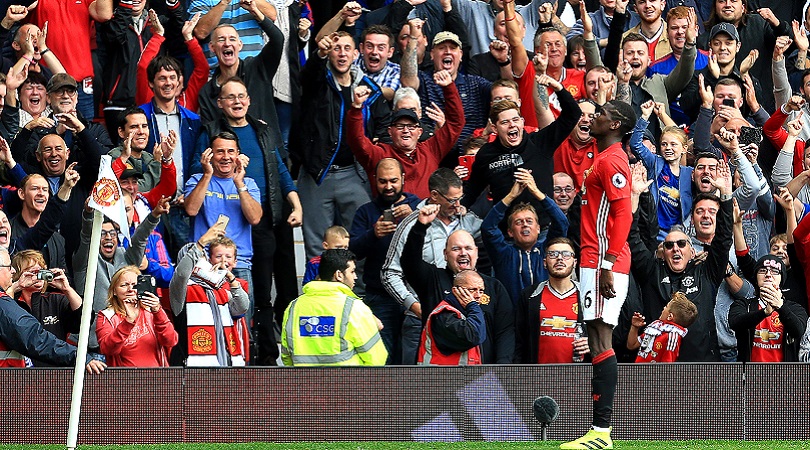
54. Paul Pogba (Juventus to Man United, 2016)
Fee: £89m
There always seems to be at least one long-running saga dominating during the summer transfer window. In 2016 it was the ‘Paul Pogba: will-he-won’t-he’ drama that resulted in Manchester United paying a world-record fee – £89m and then some in add-ons – for a player they let leave for free in 2012.
When he departed United for Juventus as a 19-year-old, Pogba told team-mate Rio Ferdinand it was to become the best player in the world. Four years on, with four Serie A titles and two Coppas Italia to his name, he made his return. At least he's a World Cup winner.
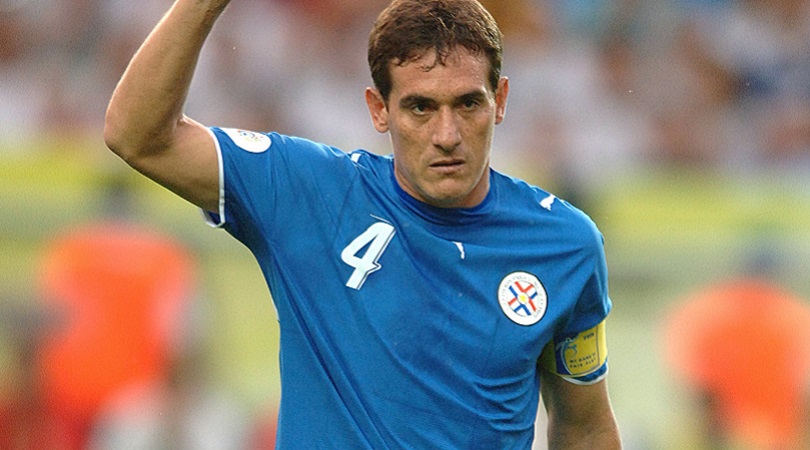
53. Carlos Gamarra (Palmeiras to Olimpia, 2007)
Fee: £1.7m
Late in his career, Gamarra could have had his pick of clubs after a fine career in Europe with the likes of Inter, Benfica and Atletico Madrid. Well, anyone but Olimpia.
That was according to Cerro Porteño fans anyway – the club he'd started out with in 1990. So when he returned home in 2007, it was expected that Gamarra would announce one final move to end his career at Cerro.
He probably wished he had. Instead, the stopper ended up signing for rivals Olimpia, and felt the supporters’ wrath so badly that they tried to set his house on fire.
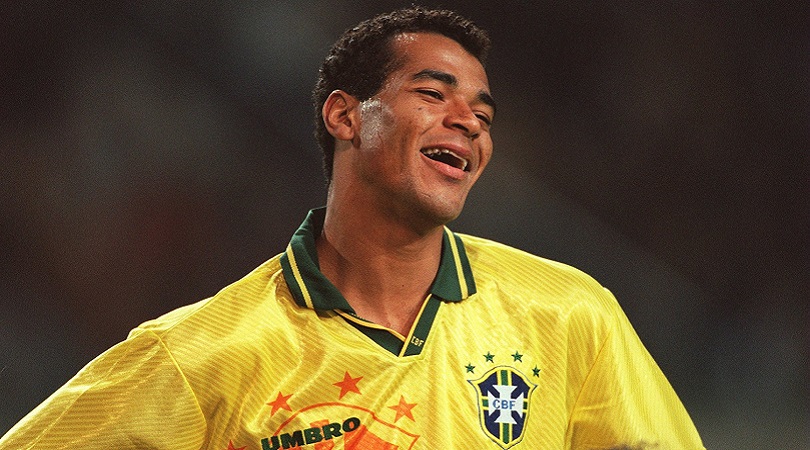
52. Cafu (Real Zaragoza to Palmeiras, 1995)
Fee: Undisclosed
São Paulo and Palmeiras have never had a great relationship, and Cafu is partly to blame. The two-time world champion won everything with São Paulo at the beginning of the '90s and was sold to Real Zaragoza in 1994, with a clause saying that the Spaniards would have to pay the additional amount of US$3.6m if they sold Cafu to Palmeiras before 1996.
Palmeiras had milk company Parmalat as a heavyweight sponsor and somehow found a way to buy Cafu by using a smaller team, Juventude, who were also partners of the nine-time Brazilain champions. The right-back is still hated by São Paulo’s fans.
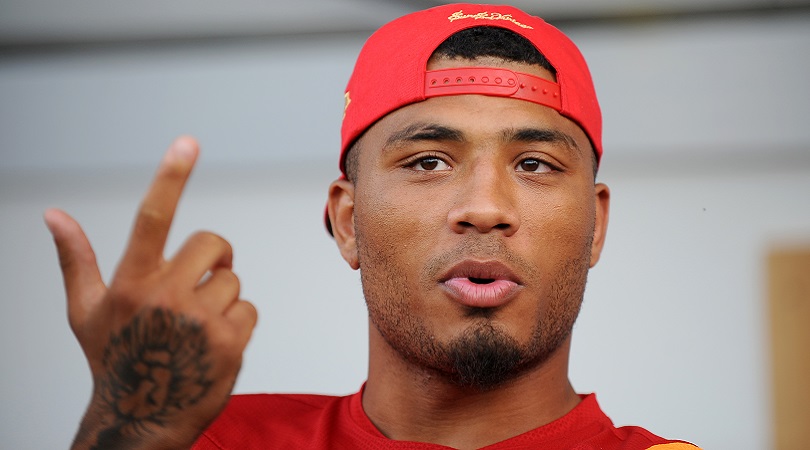
51. Colin Kazim-Richards (Fenerbahce to Galatasaray, 2011)
Fee: Free
Nobody needs reminding of the vitriol between Fenerbahce and Galatasary supporters, but it didn't faze daring globetrotter Kazim-Richards, who crossed the scorched divide on a free transfer in January 2011. The ex-Bury forward had spent three-and-a-half productive years with the Yellow Canaries, with whom he made his Champions League debut and won the majority of his Turkey caps, but soon became a victim of the country's madcap press and eventually had his contract terminated.
"I’d have been stupid not to go," Kazim-Richards told FourFourTwo. "I wanted to work with Gheorghe Hagi, an all-time great footballer.”
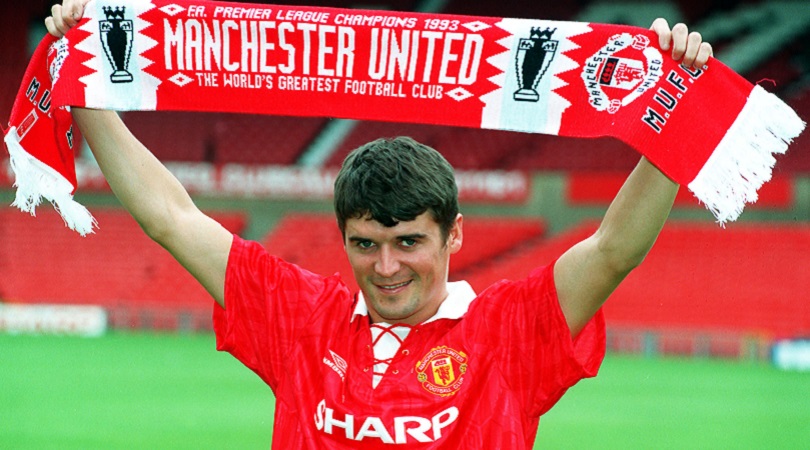
50. Roy Keane (Nott'm Forest to Man United, 1993)
Fee: £3.75m
One Friday in June 1993, Kenny Dalglish thought he had his man. The Blackburn boss had just shaken hands on personal terms with Keane for a British record £4m transfer from relegated Nottingham Forest, but the Ewood Park office had already closed. No harm done, thought Dalglish – the paperwork would be finalised first thing Monday morning. Over the weekend, Keane’s phone rang.
“Roy, it’s Alex Ferguson. Have you signed any forms?” asked the Manchester United manager. “Why don’t you come to Manchester and have a chat before you do anything?”
Over a game of snooker, Ferguson convinced Keane to reject Dalglish in favour of Old Trafford.
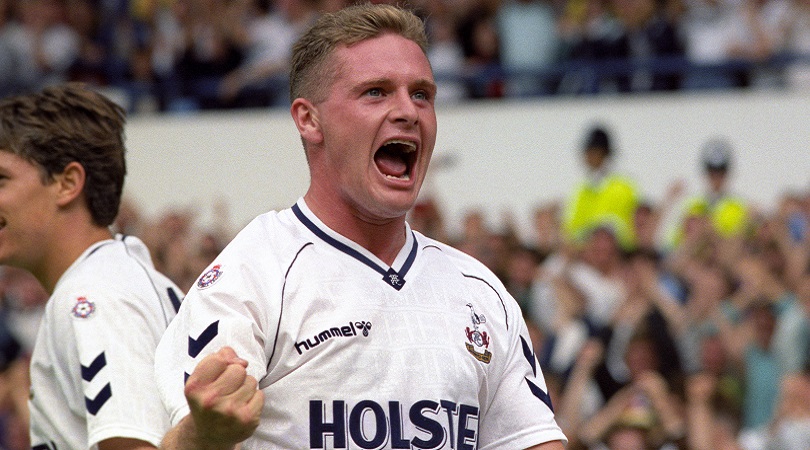
49. Paul Gascoigne (Newcastle to Tottenham, 1988)
Fee: £2.2m
After receiving a verbal assurance from Newcastle’s Gascoigne in July 1988 that he’d be joining Manchester United imminently, the Red Devils boss disappeared to enjoy a relaxing holiday, only to discover shortly after arriving that Gazza had instead joined Tottenham for a British record £2.2m fee.
The reason? The north London club had offered his parents a house and a car, and his sister a sunbed. Despite winning the FA Cup in N17, Gazza later admitted that perhaps his career would have taken a different trajectory at Old Trafford. Fergie’s holiday was ruined, but at least Gazza’s sister got a nice suntan.
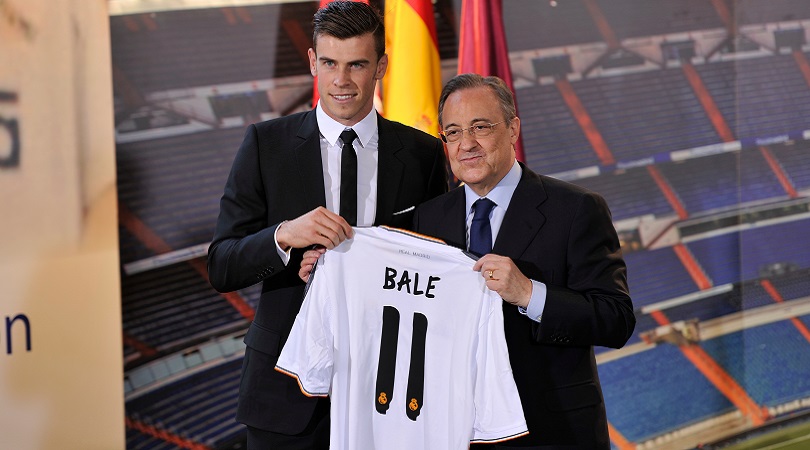
48. Gareth Bale (Tottenham to Real Madrid, 2013)
Fee: £86m
With Bale smashing in 21 league goals during the 2012/13 season, the press was full of speculation about a summer move to Europe. Daniel Levy had everything he needed to extract the full value from Tottenham's most sellable asset. Rumours of a move to Madrid began to grow, with talk of a world-record fee in the offing.
When Spurs then lavished some £105m on the likes of Vlad Chiriches, Nacer Chadli and others, the game was up: this splurge needed balancing and a £86m fee would tidy up the balance sheet nicely. Cristiano Ronaldo had been replaced as the most expensive player in the world – although it later transpired Madrid tried to cover that up to keep CR7 happy. Ludicrous.
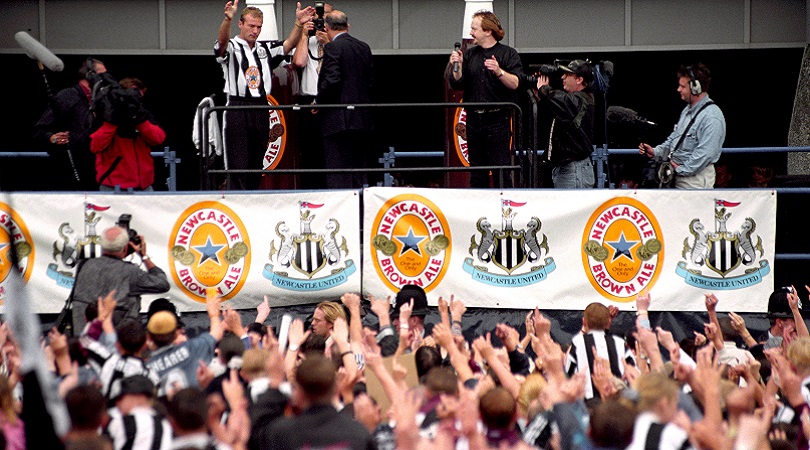
47. Alan Shearer (Blackburn to Newcastle, 1996)
Fee: £15m
That Shearer left Blackburn, a year after helping them to the Premier League title and weeks after starring at Euro 96, wasn't totally unexpected. But it was the sheer scale of the transfer that made headlines – a world record £15m fee, with 15,000 Newcastle fans turning up at St James' Park just to greet him.
Blackburn's attempts to persuade him to stay included Jack Walker surprisingly offering him the manager's job at Ewood Park aged 25, but Shearer politely declined that and the interest of reigning champions Manchester United to join his boyhood club.
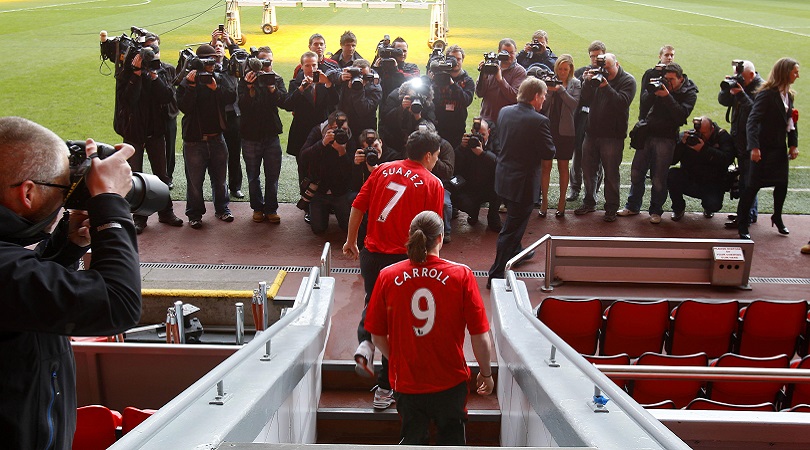
46. Andy Carroll (Newcastle to Liverpool, 2011)
Fee: £35m
"It’s about control. We had the control. We knew the Torres deal was there. We drew that f***ing deal, perhaps the ultimate. So £30m? F*** off! Don’t waste my time. I slammed the phone down. £35m? Everybody including (Alan) Pardew agreed.
"But the £35m they wanted to pay over four years. It was rubbish. Mike (Ashley) said – and he’s a brave boy, Mike, I promise you – get all the £35m up front."
That was Derek Llambias's version of events in January 2011. What happened next was a disaster for Carroll: a succession of injuries, a critical change in management and style, and a Liverpool career comprising just 11 goals.
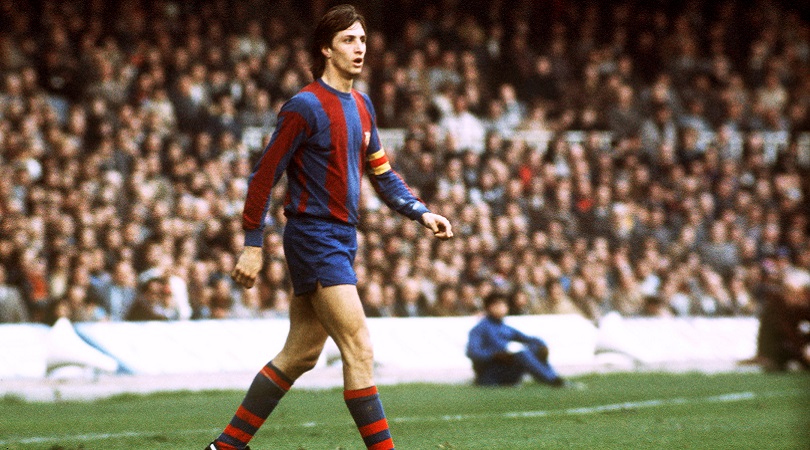
45. Johan Cruyff (Ajax to Barcelona, 1973)
Fee: £922,000
“Get me out of here,” Cruyff instructed his father-in-law and representative Cor Coster after losing out on the Ajax captaincy in summer 1973. Events moved rapidly, and for a hefty 60 million peseta fee, Cruyff headed to Barcelona after rejecting a move to Real Madrid because it was a “fascist club”.
The whole transfer was highly political, with the Dutch Football Federation threatening to block the deal, and Cruyff vowing to boycott the 1974 World Cup if the Federation didn’t sanction the move. Grudgingly they did, and Cruyff quickly became a Catalan icon.
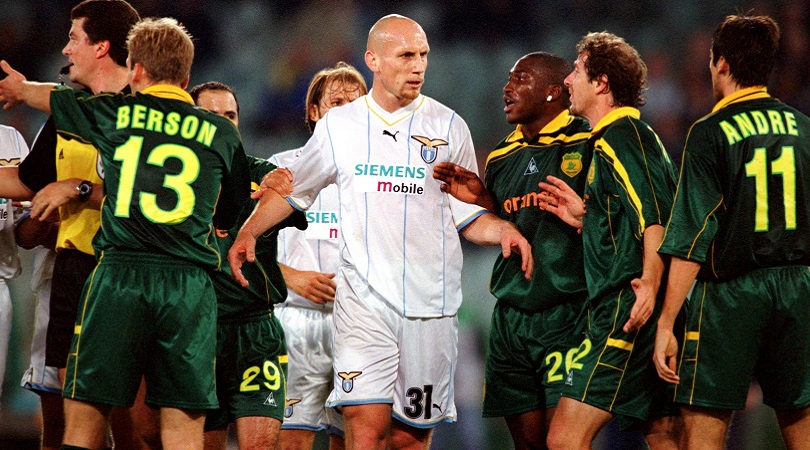
44. Jaap Stam (Man United to Lazio, 2001)
Fee: £15.3m
Sir Alex Ferguson got most things right during his trophy-laden 26 years as Manchester United manager, but the Scot has frequently expressed regret at his decision to let Stam go in 2001.
Some claimed the Dutchman was an early victim of poorly applied data analysis in football, which showed he was making fewer tackles towards the end of his United career. That was later put down to the fact that the defender was reading the game better than ever and positioning himself to intercept the ball, rather than making one-on-one challenges. No wonder Stam went on to excel in Serie A, first with Lazio and then Milan.
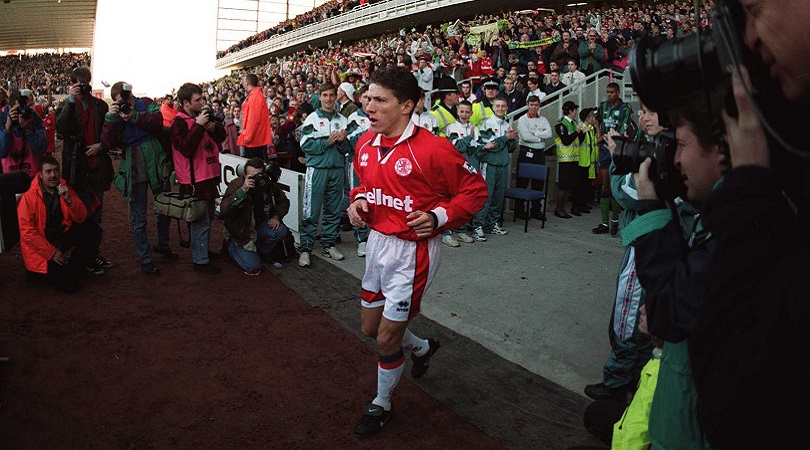
43. Juninho Paulista (Sao Paulo to Middlesbrough, 1995)
Fee: £4.75m
The brilliant diminutive Brazilian playmaker switched to Boro back in the mid-'90s, becoming the most successful signing of Bryan Robson's newly promoted Riverside outfit.
Two seasons of top-flight football culminated in two losing finals (League and FA Cup), relegation and a subsequent move to Atletico Madrid for £13m at a healthy profit. However, the cult hero returned twice more to the north-east: on loan to help the promoted Boro in 1999, before joining up with the Teessiders again in 2002 – winning the League Cup in 2004.
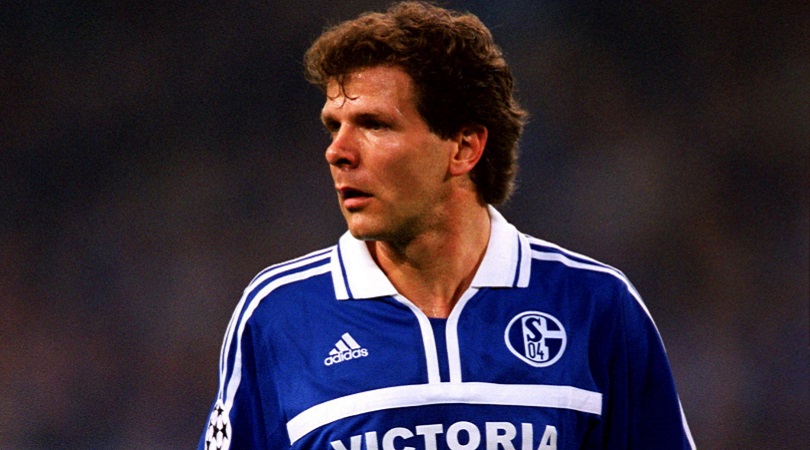
42. Andreas Moller (Borussia Dortmund to Schalke, 2000)
Fee: Free
Not only did this transfer upset Borussia Dortmund fans, it also aggravated Schalke's too. Moller had already irritated Dortmund supporters by leaving for Eintracht Frankfurt in 1990, only to return for a second spell in which he re-established himself as a hero and helped BVB to Champions League glory in 1997.
Three years later he was off again: this time to Dortmund's fierce local rivals Schalke following the expiry of his contract. Dortmund fans were livid, and Schalke's didn't exactly welcome the arrival of a man they'd previously grown to hate. Awkward.
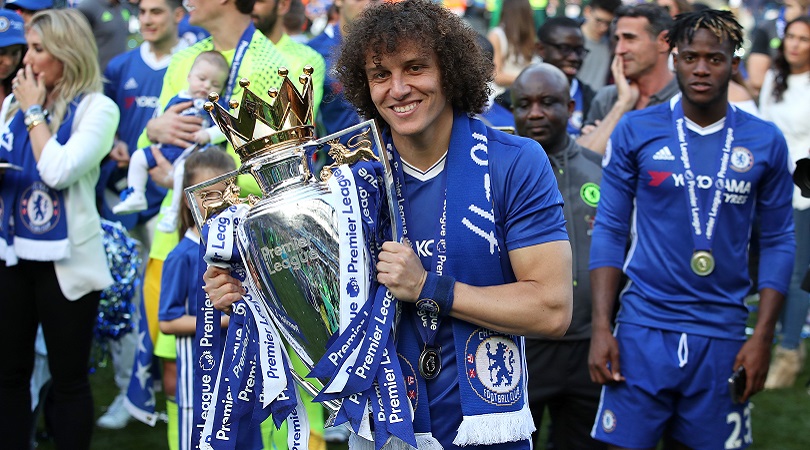
41. David Luiz (PSG to Chelsea, 2016)
Fee: £34m
Having chased Alessio Romagnoli and Kalidou Koulibaly for much of the summer, Blues fans were somewhat baffled by Antonio Conte's decision to bring David Luiz back to west London.
Here was a player routinely mocked for his bizarre defending style, with many onlookers believing that Chelsea always looked more secure defensively the further away the Brazilian was from his own box. A speedy £34m deal was rubber-stamped on deadline day, though, in a move that screamed ‘fall-back option’.
But Luiz was a revelation. Playing at the heart of Conte’s brilliant back three, the defender starred as Chelsea won the title.
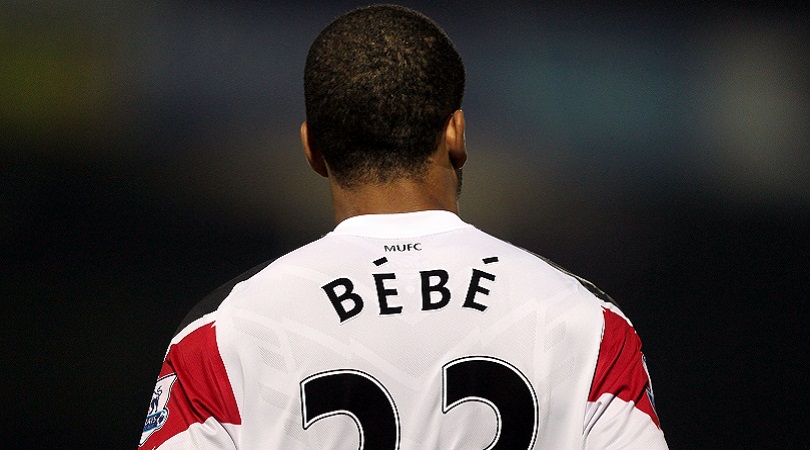
40. Bebe (Vitoria to Man United, 2010)
Fee: £7.4m
The player who Alex Ferguson famously signed having never seen play. Bebe’s employment at Old Trafford was sealed by a startling fee of over £7m, just 12 months after he was being touted around Europe for £125,000. It ended, four years and two Premier League appearances later, as one of the most ignominious and inexplicable transfers of the modern era.
United bought Bebe from Vitória at a time when he had only played six pre-season friendlies for the Portuguese club, having just signed for them. The transfer was subject to an investigation by Portuguese anti-corruption police in 2012, though no party was ever charged with wrongdoing.
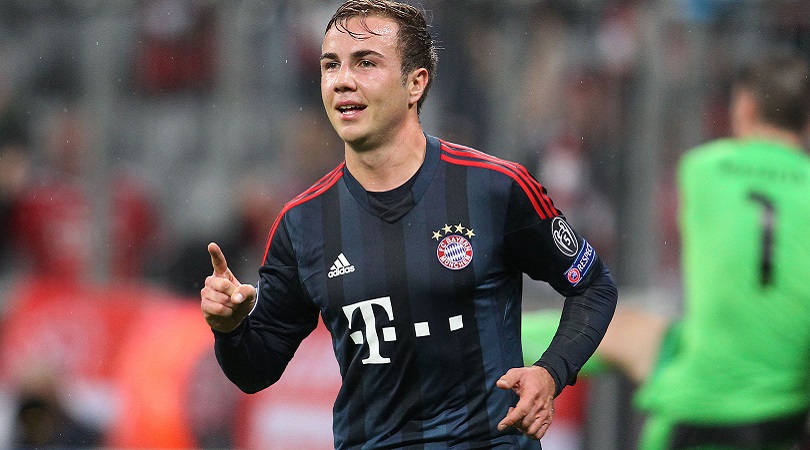
39. Mario Gotze (Borussia Dortmund to Bayern Munich, 2013)
Fee: £32m
Robert Lewandowski and Mats Hummels both swapped Borussia Dortmund for Bayern Munich in later years, but Gotze’s move from the former to the latter was easily the most seismic.
Despite being born in Bavaria, the future World Cup winner joined BVB at the age of eight and went on to play a starring role in their Bundesliga triumphs of 2011 and 2012.
In April 2013, though, it was confirmed that Gotze was Bayern-bound after Die Roten triggered his release clause. Dortmund fans didn’t take the news particularly well, while the attacking midfielder – now back at Signal Iduna Park, along with Hummels – struggled to nail down a regular first-team spot under Pep Guardiola.
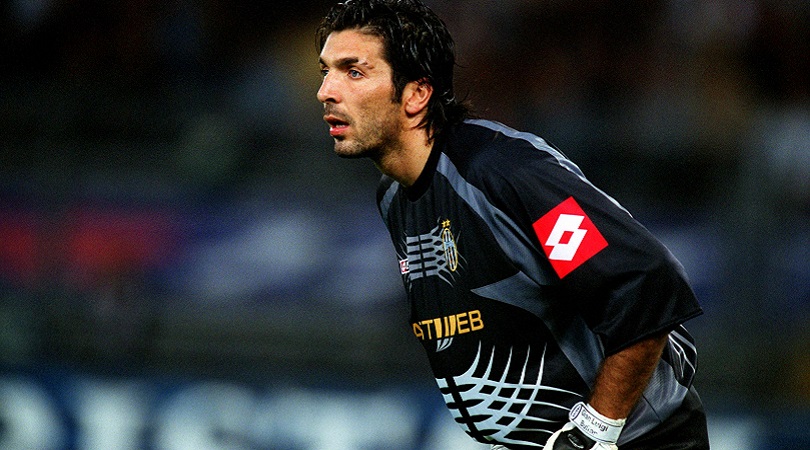
38. Gigi Buffon (Parma to Juventus, 2001)
Fee: £32m
While many of these deals saw one side steal a great player from one of their rivals, Buffon’s move from Parma to Juventus is one that truly benefited both teams. The Stadio Tardini outfit were struggling financially, but collected a cool €53m fee. Juventus didn't do badly out of the deal, either, signing a 23-year-old who became arguably the finest player ever to stand between the posts.
Ten Serie A triumphs (two of which were revoked) and a Serie B title in 16 seasons proved a fine return.
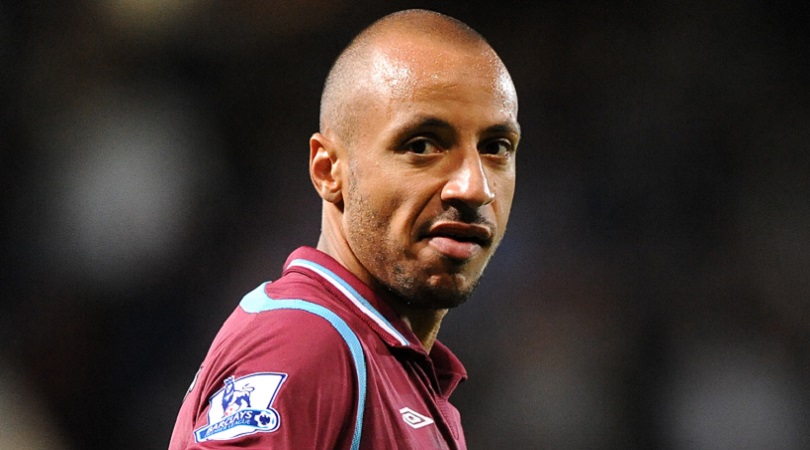
37. Julien Faubert (West Ham to Real Madrid, 2009)
Fee: Loan
The Soccer Saturday panel were running through the half-time scores when the news broke. “Julien Faubert has joined Real Madrid,” Jeff Stelling declared, stunning his colleagues into silence. “Who’s his agent?” a flabbergasted Paul Merson enquired. “He should be knighted by the queen.”
It’s hard to disagree. Faubert, who’d hardly set the world alight after joining West Ham 18 months previously, played just 52 league minutes during his loan spell at the Bernabeu.
His most memorable contribution came when he appeared to fall asleep on the bench during a game against Villarreal, although he later informed FFT that he’d merely “closed [my] eyes because I was bored”.
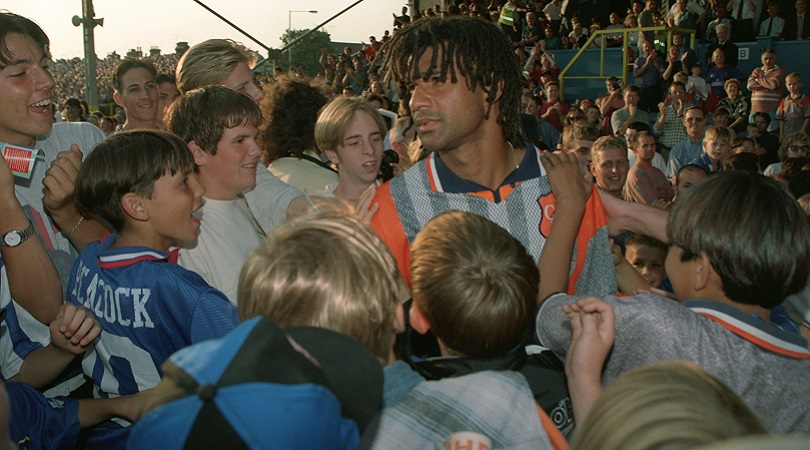
36. Ruud Gullit (Sampdoria to Chelsea, 1995)
Fee: Free
Gullit's move from Sampdoria was indicative of both the Premier League's swelling pockets and its intention to be noticed by the rest of the world. By 1995, the Serie A consensus appeared to be that chronic knee problems had dulled the former World Footballer of the Year, and that he was subsequently no longer worth the financial bother.
Glenn Hoddle disagreed, though, giving Gullit a new home on the King's Road and a leg-saving role at sweeper. He spent just three years in London, but the Dutchman’s Chelsea legacy is framed by what he enabled: the beginning of the club's ascension towards its contemporary personality.
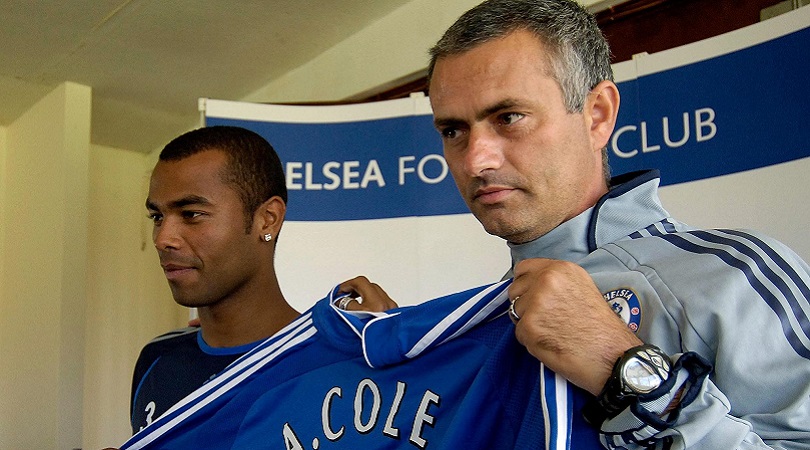
35. Ashley Cole (Arsenal to Chelsea, 2006)
Fee: £5m (part exchange)
For the sake of appeasing any lawyers who may be reading, let's just say that Chelsea 'admired' Ashley Cole while he was still an Arsenal player. Photographs were taken, back pages throbbed with scandal, and in 2005 Cole was fined by the Premier League for engaging in illegal contact with representatives from Stamford Bridge.
By August 2006, one of the most protracted sagas in transfer history was concluded: Cole joined Chelsea for £5m, with William Gallas moving in the opposite direction.
It was the death of Ashley the Footballer and the birth of ‘Cashley’, a personification of everything that was wrong with the modern game.
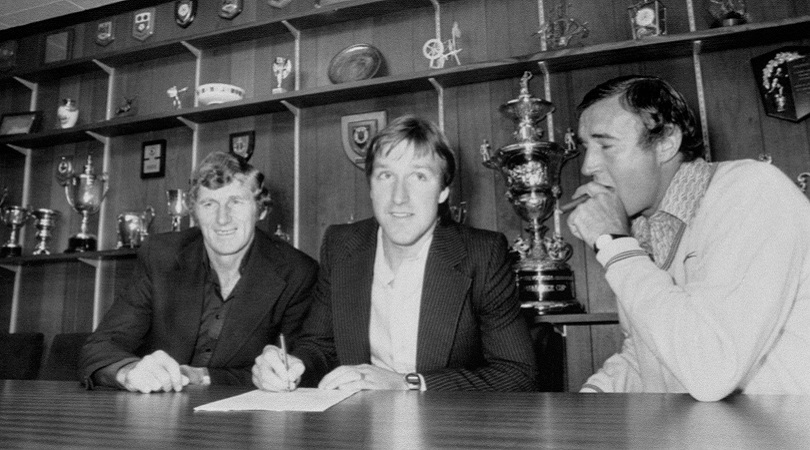
34. Steve Daley (Wolves to Man City, 1979)
Fee: £1.4m
Manchester City manager Malcolm Allison claimed he’d offered a tidy £400,000 to Wolves for dogged midfielder Steve Daley in September 1979, only for City chairman Peter Swales to add a cool £1m to the fee, and nab him for £1.4m. Swales may have denied Big Mal’s claim but the move never worked out, with Daley – a neat and tidy player – failing to live up to hype.
The nadir came at Brighton, when Daley was sent off with 15 minutes remaining and City contrived to throw away their lead.
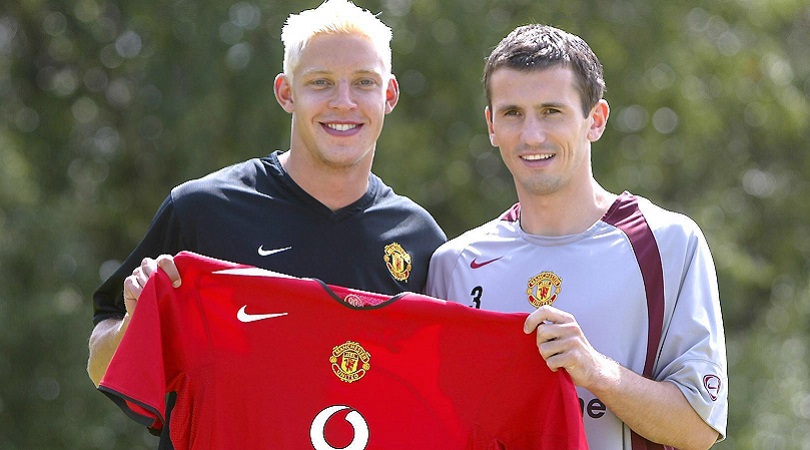
33. Alan Smith (Leeds to Man United, 2004)
Fee: £7m
He could hardly have been clearer. “Man United,” Smith replied, when asked in a Sky Sports interview whether there was a team he would never play for.
At that point, the boyhood Leeds fan was living the dream by representing his hometown club in the Premier League, but relegation and the threat of administration brought about his departure in 2004. United, who bid £7m for the striker’s services, would be his next employers.
“I was young and naive and never thought that a) Man United would ever want me, and b) Leeds would sell me,” Smith told FourFourTwo in 2015. “Look how silly I was.”
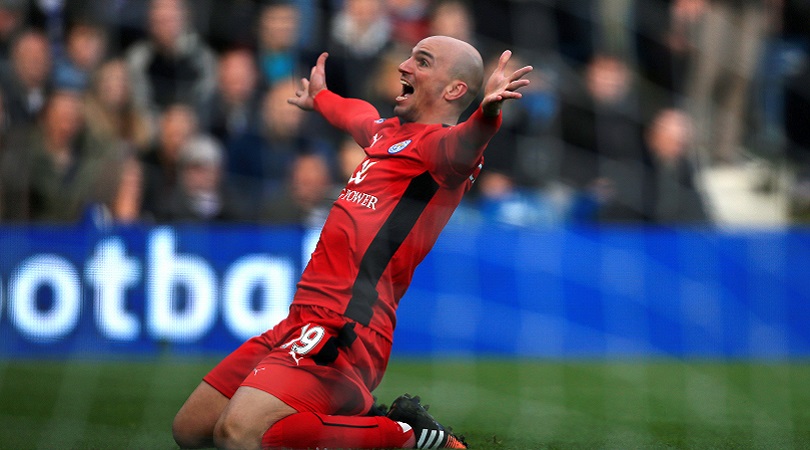
32. Esteban Cambiasso (Inter to Leicester, 2014)
Fee: Free
In one of the most intriguing signings the Premier League has ever seen, 52-time Argentina international Cambiasso spurned advances from elsewhere to join Nigel Pearson’s newly promoted Leicester.
For a while he may have been regretting it: a dreadful run of just two wins from 25 league games left Pearson’s side almost resigned to relegation, seven points from safety.
But then that fightback: seven wins from their last nine games to complete a miraculous escape, with Cambiasso’s experience driving the Foxes through it. Leicester wanted him to stay for another year; instead, he joined Olympiakos. Turns out he’d been holding them back all along: with N’Golo Kante installed as his replacement, Leicester only went and won the league in 2015/16.
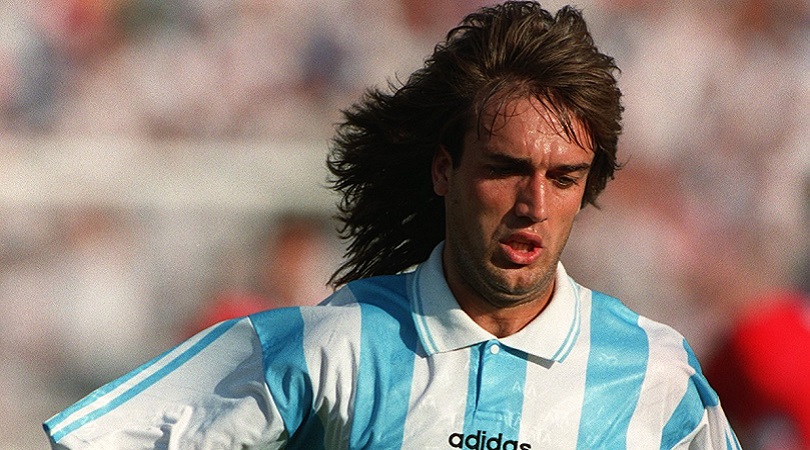
31. Gabriel Batistuta (River Plate to Boca Juniors, 1990)
Fee: Free
In 2002 World Cup qualifying, Argentina beat Uruguay 2-1 in Buenos Aires. Batistuta celebrated the result by running in Daniel Passarella’s direction and telling his compatriot and rival coach: “This is for you.”
Behind it was the revenge he’d been seeking since the day Passarella threw him out of River Plate’s squad in 1990 because he felt the striker needed a team to play for him (and didn’t like that he was growing his hair).
In return, ‘Batigol’ shocked everyone by moving from River to Boca Juniors – and duly became an idol at La Bombonera. Passarella has never forgiven himself for accepting the transfer.

30. Jurgen Klinsmann (Monaco to Tottenham, 1994)
Fee: £2m
A transfer which emerged from an unlikely series of events: Tottenham's initial intention was to sign Diego Maradona, but instead Alan Sugar ended up entertaining Klinsmann on his yacht.
This was 1994 and Klinsmann wasn’t just the world's premier forward, but also entirely at odds with English football culture. He didn't join today's Spurs, but a mid-level club in a rugged, under-developed competition – and a country in which he was a natural enemy.
For Tottenham, it seemed too good to be true – and, alas, it was. A single glorious season, a signed shirt and an incredulous Sugar press conference later, Klinsmann had joined Bayern Munich.
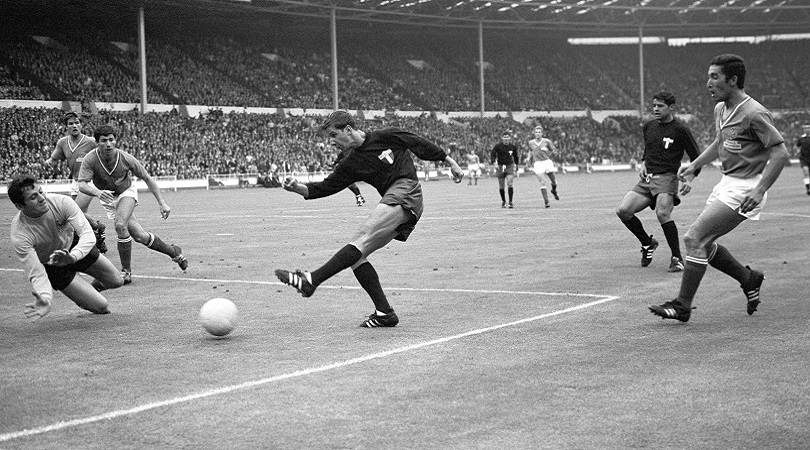
29. Enrique Borja (Pumas to America, 1969)
Fee: Undisclosed
Borja was 23 years old, had scored 69 goals for Puma, and wasn’t considering a move when he was told by the board that he’d been sold to his club’s biggest rivals America in 1969.
He was so annoyed at not being informed of the negotiations that he threatened to retire from football – and the conflict became so serious that even the Mexican president Guillermo Diáz Ordaz had to intervene.
Ordaz promised to create a law which would allow footballers to profit from future transfers; Borja ended up moving to America and becoming a legend for his new club.
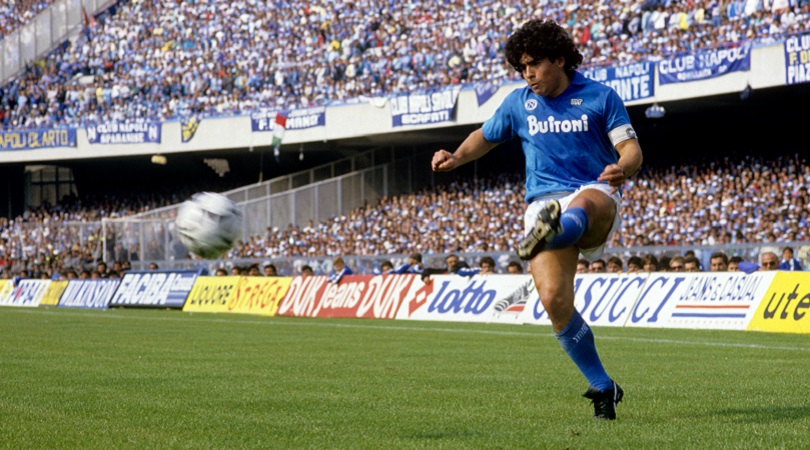
28. Diego Maradona (Barcelona to Napoli, 1984)
Fee: £8m
After partying, ill-discipline and injuries meant he became surplus to requirements at Barcelona, Maradona’s move to Napoli in 1984 was the moment that gave birth to his legend.
Dazzling defences with his breathtaking skill, the Argentine star helped a club which had previously yo-yoed between Italy’s top two divisions win the only two titles in its history, thus breaking the duopoly of Juventus and Milan.
His confidence and tenacity mirrored that of his new city’s inhabitants, who related to the boy born in an Argentine shantytown and took to him as one of their own.
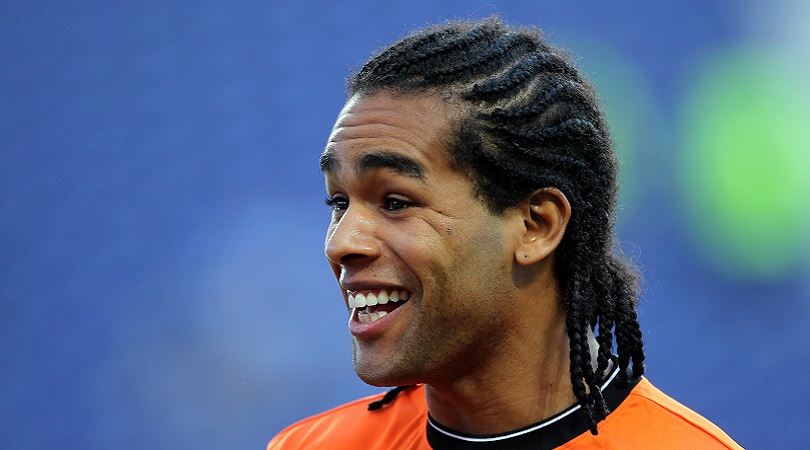
27. Alex Teixeira (Shakhtar Donetsk to Jiangsu Suning)
Fee: £42m
Never let it be said that Teixeira isn’t an entrepreneurial fellow. Aged 19, the attacking prodigy left Vasco da Gama in his native Rio de Janeiro and headed for the somewhat frostier environs of Ukraine to join the billionaire-funded Shakhtar Donetsk.
Seven years and five league titles later, the playmaker was being lined up by Liverpool, who were confident their much-deliberated £25m bid would tempt Shakhtar to sell. Yet within days, Teixeira was on a plane to China, Jiangsu Suning’s €50m offer having blown the Reds out of the water and broken the Chinese transfer record for the third time in a fortnight.
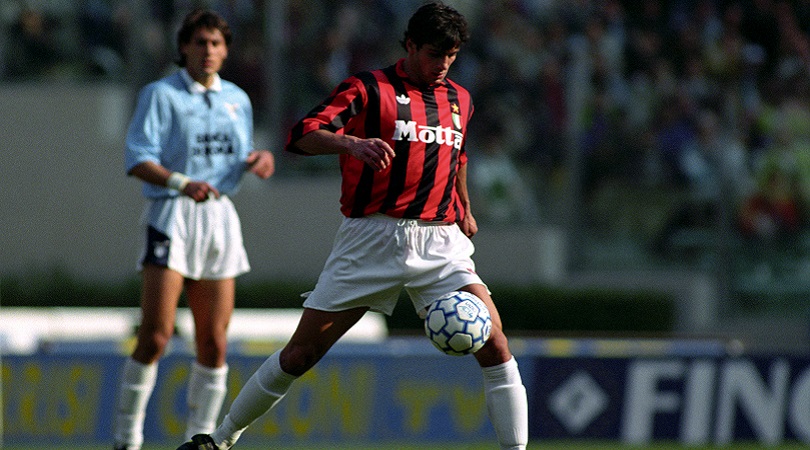
26. Gianluigi Lentini (Torino to Milan, 1992)
Fee: £9.2m
Having begun his career with Torino, Lentini quickly shot to prominence with the Granata as his dazzling wing play helped them reach the 1992 UEFA Cup Final.
Yet even as Silvio Berlusconi’s Milan routinely hoovered up the finest talent from across the continent, it was still a shock when they smashed the world transfer record by paying €13m for Lentini in 1992.
A statement from the Vatican called the transfer fee “an offence to the dignity of work” but just a year later, a near-fatal 200km-per-hour car crash effectively ended the left-footed star’s career.
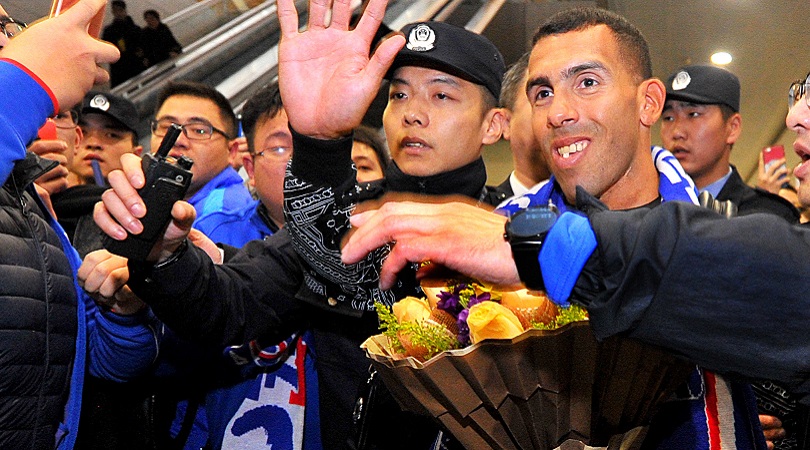
25. Carlos Tevez (Boca Juniors to Shanghai Shenhua, 2017)
Fee: £71.6m
Tevez has never been afraid to make a controversial and costly club switch, his most recent coming when he swapped Boca Juniors for Shanghai Shenhua in 2017. The striker became the highest-paid footballer in the world on an eye-watering £615,000 a week; the transfer fee said to be just shy of £72m.
Yet Tevez didn’t even pretend to be interested in Shenhua’s fortunes, and he was back at Boca the following year after just 16 league appearances in the Far East. Nice work if you can get it.
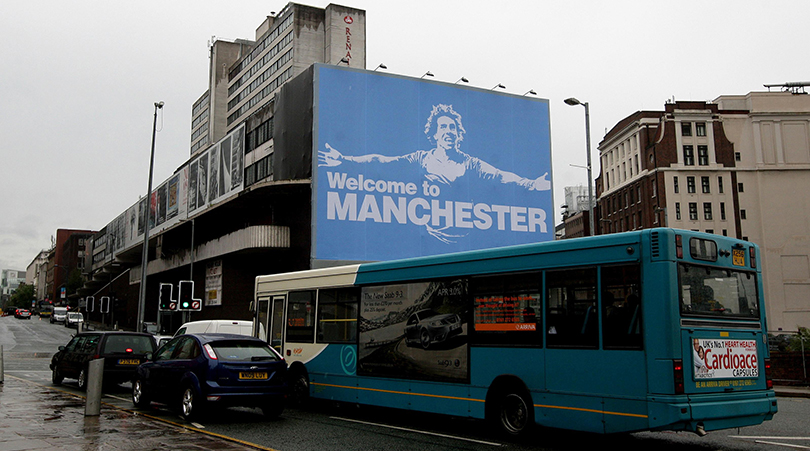
24. Carlos Tevez (West Ham to Man City, 2009)
Fee: £25.5m
“Sometimes you have a noisy neighbour. You can’t do anything about that. They’ll always be noisy. You just have to get on with your life, put your television on and turn it up a bit louder.”
Sir Alex Ferguson was, of course, referring to Manchester City, who celebrated the signing of Tevez after a two-year loan spell at their cross-city rivals with a giant billboard featuring the Argentine’s face alongside the words: ‘Welcome to Manchester’.
It was a cheeky jibe, but Tevez was more than just a tool to wind up United: he averaged a goal every other game during his four seasons at the Etihad – and won the title at his old club’s expense in 2012.
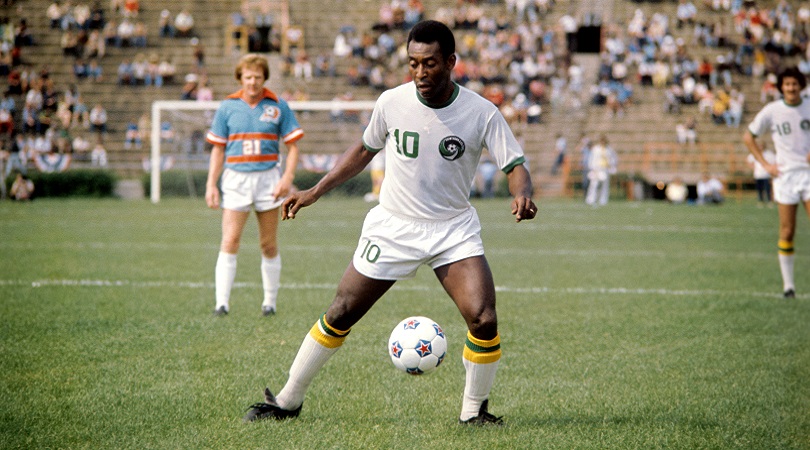
23. Pele (Unattached to New York Cosmos, 1975)
Fee: Free
“The North American Soccer League was practically dead. We decided there were two things that were needed to transform the whole issue. One was the World Cup, and the other was Pele. He was the only player anyone in this country had heard of.”
With ‘American soccer’ something of an oxymoron in 1975, those words from New York Cosmos president Clive Toye would have been enough to provoke laughter in a cathedral – yet five years of on-off persuasion and a $2.8m contract that made a 34-year-old Pele the world’s highest-paid athlete, helped realise the impossible.
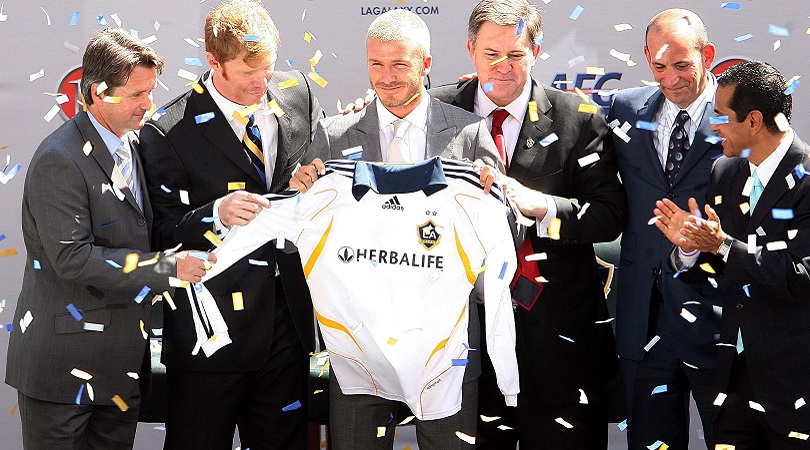
22. David Beckham (Real Madrid to LA Galaxy, 2007)
Fee: Free
MLS has since become a popular destination for fading European stars, but when Beckham announced he would be joining LA Galaxy in summer 2007 – long before crossing the Atlantic westward was commonplace for footballers – it came as a major shock.
Real Madrid manager Fabio Capello initially insisted he would never represent los Blancos again, before changing his mind and allowing Beckham to return a few weeks later.
The former Manchester United man made a total of 113 appearances during his five years as a Galaxy player – and also enjoyed separate loan spells with Milan during the US off-season – before finishing his career at PSG.
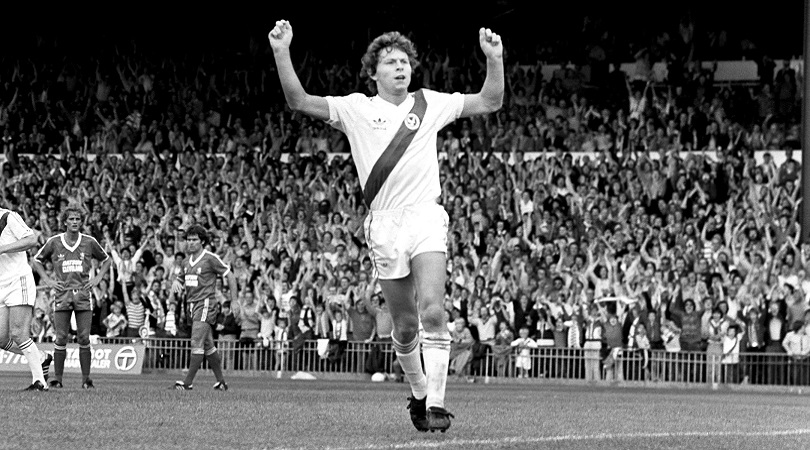
21. Clive Allen (Arsenal to Crystal Palace, 1980)
Fee: Swap deal
If breaking the bank to buy a teenage striker wasn’t very Arsenal, swapping him for a left-back two months later was even less believable. But it happened.
In summer 1980, barely a year after Trevor Francis broke the £1m barrier, the Gunners splurged £1.25m on Clive Allen, the 19-year-old who’d bagged 32 in 49 for QPR.
Three pre-season games later, he was bundled off to Crystal Palace (with reserve keeper Paul Barron) in exchange for Kenny Sansom. Sansom racked up nearly 400 Gunners games; Allen may be the only man to 'play' for Arsenal, Tottenham, Chelsea, West Ham, Millwall, QPR and Palace.
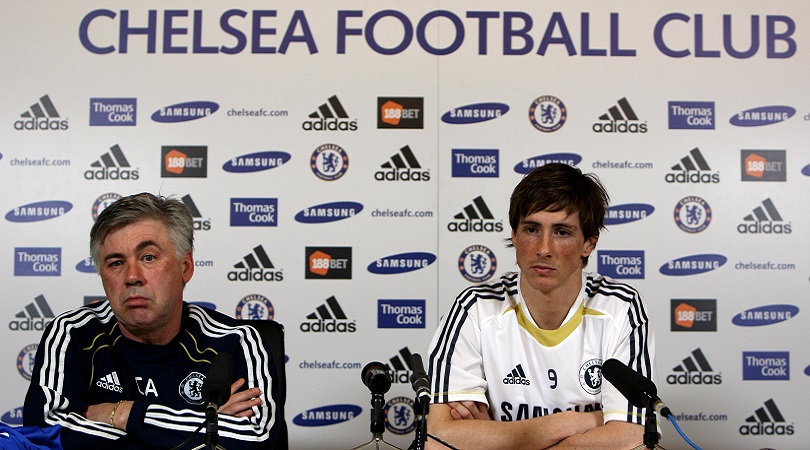
20. Fernando Torres (Liverpool to Chelsea, 2011)
Fee: £50m
For Andriy Shevchenko in 2006, read Fernando Torres in 2011: for a while, Chelsea seemed to be the last club in the world to know when a player's legs were gone.
Had his Stamford Bridge malaise (20 goals in 110 league games) arrived unexpectedly, the British transfer record-breaking £50m that Roman Abramovich agreed to pay would have been easy enough to justify: Torres had been an outstanding forward and Liverpool considered Chelsea a rival. As it was, though, they paid through the nose in the hope that the six-month decline he was suffering through was a blip rather than the new normal. It wasn't.
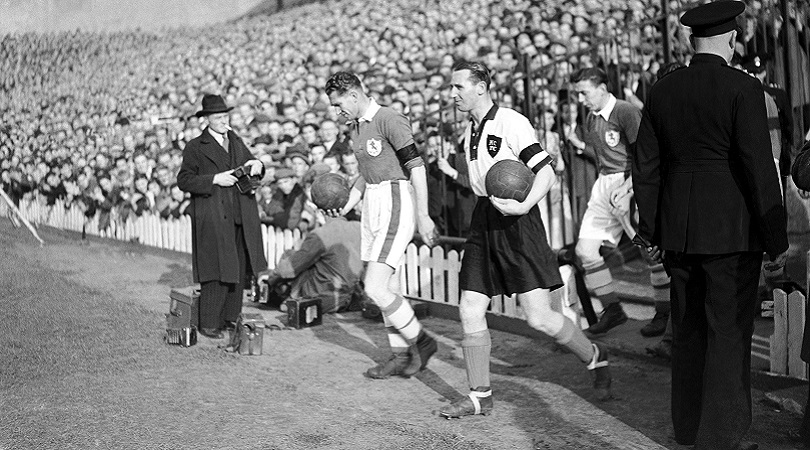
19. Tommy Lawton (Chelsea to Notts County, 1947)
Fee: £20,000
It was Notts County manager Arthur Stollery, once physio at Stamford Bridge, who convinced England striker Tommy Lawton to leave First Division Chelsea and try his luck at County, two divisions below.
After learning that the player was unsettled in west London, a British record £20,000 outlay lured Lawton – still at the height of his powers – to Meadow Lane in 1947, and his arrival had crowds swelling to around 30,000 a game.
Doubters suggested that Lawton's spell there would be brief, but he stayed for five seasons, netting 103 goals in 166 appearances.
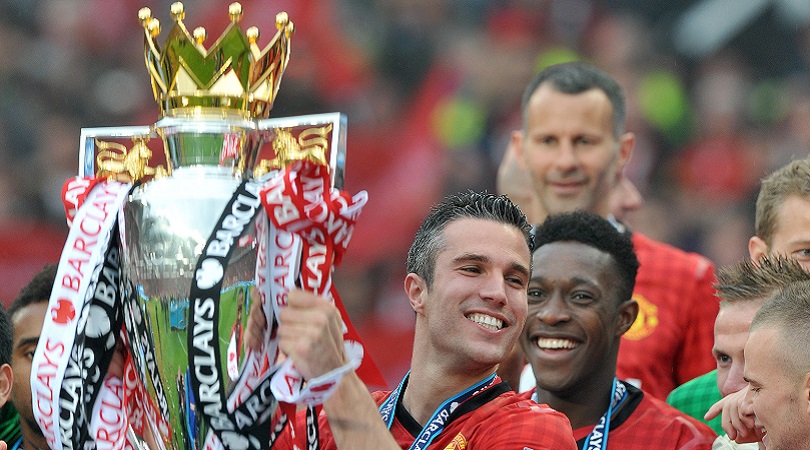
18. Robin van Persie (Arsenal to Man United, 2012)
Fee: £24m
"I always listen to the little boy inside of me in these situations – when you have to make the harder decisions in life. What does he want? That boy was screaming for Man United."
The bittersweet irony for Arsene Wenger was that Van Persie's best season for Arsenal occurred when the Dutchman was approaching the end of his contract.
In July 2012, a year away from being a free agent, Van Persie announced that he wouldn't be signing fresh terms. Arsenal reluctantly agreed to sell their talisman for an initial £22m, which rose when United won the Premier League with Van Persie's goals a year later.
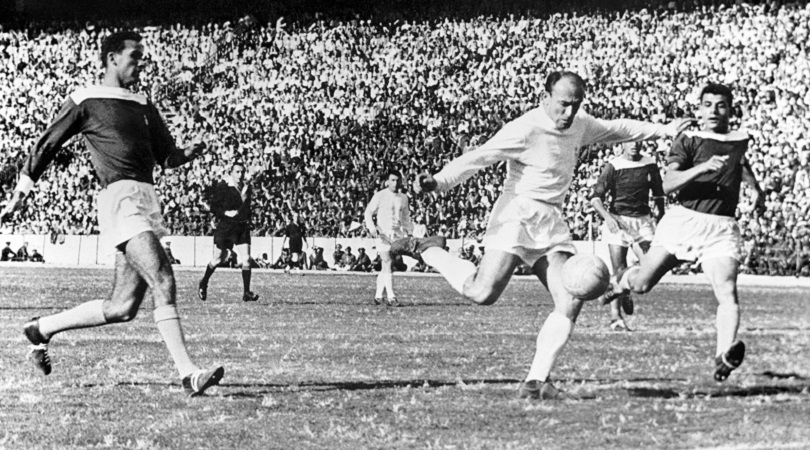
17. Alfredo Di Stefano (Millonarios to Real Madrid, 1953)
There had always been needle between Real Madrid and Barcelona, but the tug-of-war between La Liga’s big two for the Blond Arrow ensured on-field hostilities for years to come.
When Di Stefano left River Plate for Colombian side Millonarios in 1951, there was confusion as to which club the silky centre-forward actually belonged. Two years later, Barcelona agreed terms with River (who still owned his rights), while Madrid did a deal with Millonarios (for whom he played).
Eventually, the Catalans announced that they couldn’t be bothered with the hassle. Di Stefano went on to win 15 major honours with los Blancos.
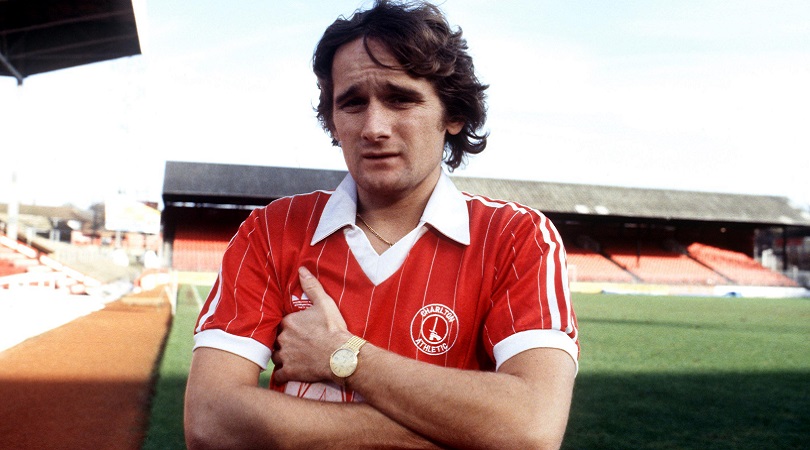
16. Allan Simonsen (Barcelona to Charlton, 1982)
Fee: £324,000
Sidelined at Barcelona following the arrival of Diego Maradona, former European Footballer of the Year Simonsen decided that a move to struggling Second Division side Charlton Athletic would be just the ticket for a quiet life.
Outbidding Real Madrid, Addicks chairman Mark Hulyer offered a whopping £324,000 for the great Dane, reckoning that the Barça man's star quality would once again fill the crumbling Valley.
But the whole scheme was pie in the sky. Simonsen turned in some fine performances, but his colleagues were a cut below their illustrious new team-mate. Hulyer's foolhardy PR stunt failed, and Simonsen hot-footed it back to Denmark after five months.
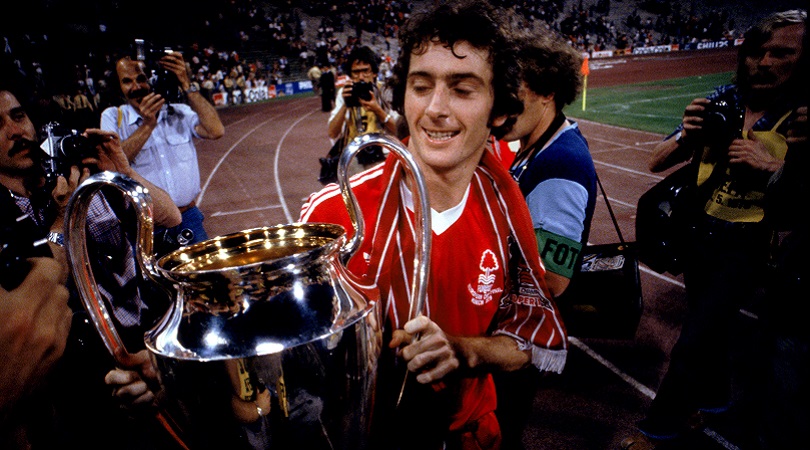
15. Trevor Francis (Birmingham to Nott’m Forest, 1979)
Fee: £1m
Although a typically bombastic Brian Clough claimed that Francis's transfer fee in February 1979 was actually £999,999 (he allegedly didn't want the tag of being Britain's first million pound footballer going to the former Birmingham forward's head), the gargantuan fee – which triggered a glut of largely unsuccessful £1m transfers – sent shockwaves around football.
At the end of his first season, Francis duly scored the winner against Malmo in the European Cup final, but not before Clough insisted that he make the half-time tea for his new team-mates in order to ensure that his player’s pricey feet remained firmly on the ground.
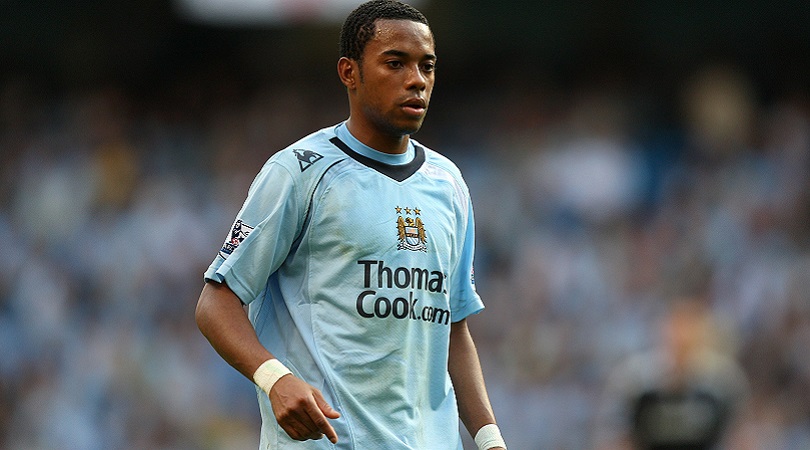
14. Robinho (Real Madrid to Man City, 2008)
Fee: £32.5m
Manchester City needed a big name in September 2008. By the time the Abu Dhabi Group had settled on Robinho, David Villa and Kaka had already rebuffed them with a quizzical Que? Nevertheless, at the 11th hour a giggling Real Madrid accepted a £32.5m bid for their out-of-favour Brazilian and, in the morning, the rest of the world was spitting out its coffee.
The deal is generally assessed as a failure. That's not unreasonable: Robinho was incontestably disappointing after all, but it did put the rest of England on notice – from being clumsy billionaires, City would rise to become one of the most feared transfer vultures in world football.
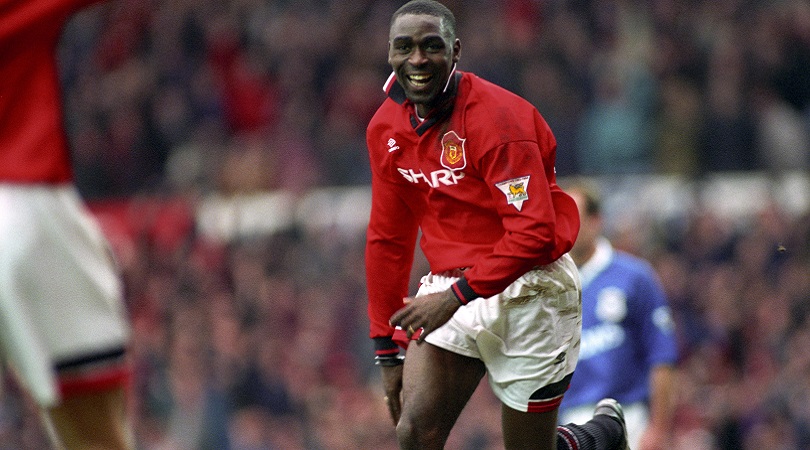
13. Andrew Cole (Newcastle to Man United, 1995)
Fee: £7m
Kevin Keegan once said he’d “put the phone down on Fergie if he ever called about Andy”. But simmering tensions between player and manager in the winter of 1994 had convinced the Newcastle boss he had a problem that even a remarkable goalscoring record (34 in 40 in his first top-flight season) couldn’t mitigate.
A £7m fee did little to soften the blow among Newcastle supporters, who forced Keegan to take to the steps outside St James’ Park and provide a face-to-face explanation for a small army of mutinous fans.
Astonishingly, Cole elected not to play in his first match against his old club, for no other reason than sheer goodwill.

12. Ricky Villa and Ossie Ardiles (Racing Club/Huracan to Tottenham, 1978)
In 1978, Sheffield United manager Harry Haslam travelled to the World Cup in Argentina for a better look at a 17-year-old Diego Maradona.
His good friend – the Tottenham manager Keith Burkinshaw – decided to come along for the ride. Maradona never did end up in Sheffield, but his team-mate Ardiles caught Burkinshaw’s eye. Once he and his pals had wrapped up a victorious World Cup campaign, Ardiles wasted little time in signing on for the club he called 'Tottingham'.
Both earned themselves club legend status: Ardiles stayed for a decade, while Villa scored what might just be the most famous FA Cup final goal of all-time in 1981.
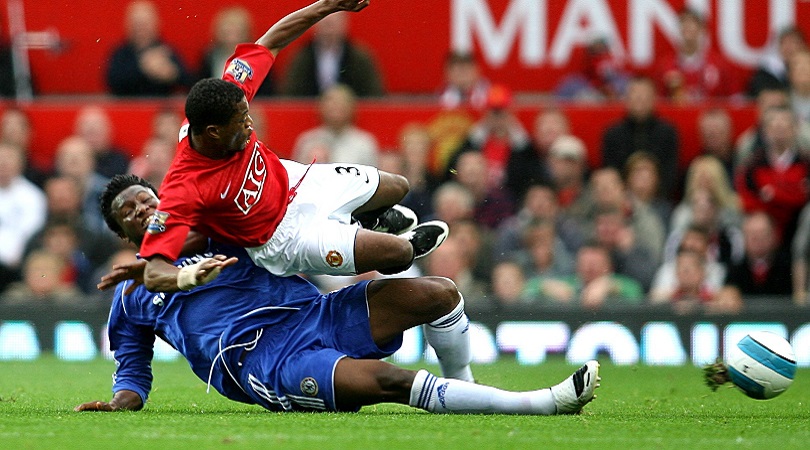
11. John Obi Mikel (Lyn Oslo/Man United to Chelsea, 2006)
Fee: £16m
Even now, nobody seems quite certain as to what happened between Manchester United, Chelsea and Norwegian side Lyn. In 2005, United claimed an agreement had been reached with player and club, and even released pictures of him holding their shirt.
Chelsea were furious, insisting that they had a prior agreement to sign Mikel, evidenced by the financial assistance they'd given during his education in Norway.
An intervention from the Norwegian Football Federation led to Chelsea paying a split fee of £16m to Manchester United (£12m) and Lyn (£4m) for a player who would win every domestic and continental trophy available to him over the next decade.
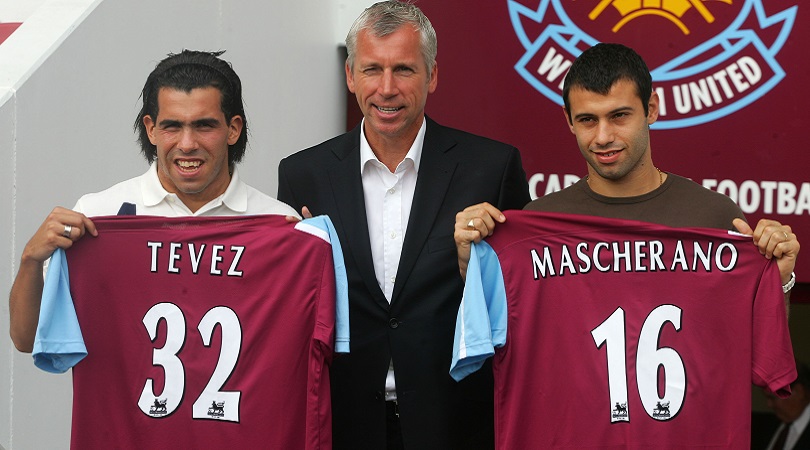
10. Carlos Tevez and Javier Mascherano (Corinthians to West Ham, 2006)
Fee: Undisclosed
The most entertaining aspect of this deal is unquestionably that, with West Ham in deep relegation trouble, Alan Pardew generally opted to play Marlon Harewood and Hayden Mullins instead of Tevez and Mascherano.
The controversy bubbles to this day: both players' rights were owned by Media Sports Investments rather than Corinthians, and West Ham were not only fined by the Premier League for breaching the rules governing registration but also forced to arrive at a settlement with relegated Sheffield United, who – according to Neil Warnock – went down as a direct consequence of Tevez's form. Crucially, though, the Hammers were allowed to keep their place in the division.
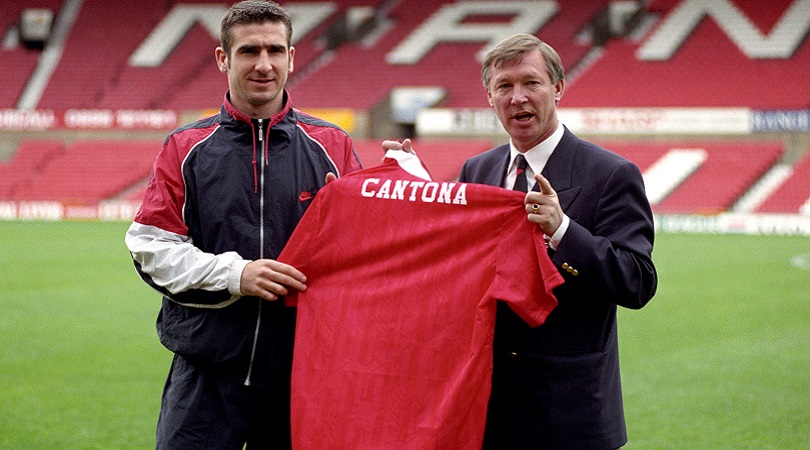
9. Eric Cantona (Leeds to Man United, 1992)
Fee: £1.2m
Legend has it that it was a spur-of-the-moment thought. When Leeds enquired about the availability of Denis Irwin, Alex Ferguson thought it might be worth asking the same about Cantona. The Frenchman, whose fiery temperament worried the Leeds hierarchy, needed little persuasion to switch, the laughable fee of £1.2m arguably representing football’s most glorious bargain.
In just half a decade at United, Cantona made a strong case for being the club’s greatest-ever player. His grit, flair and charisma did much to forge the aura on which the Ferguson era was founded, and his unrelenting dedication to training proving instructive to a certain group of up-and-comers.
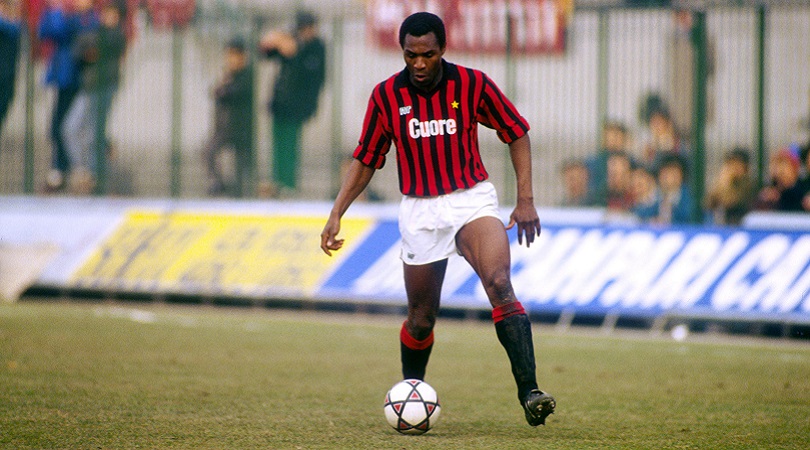
8. Luther Blissett (Watford to Milan, 1983)
Fee: £1m
“I was stunned that someone was prepared to pay that much for a footballer,” Blissett later told FourFourTwo of his move to Italy the year after he top-scored the First Division with 27 goals for plucky Watford.
Just one year later, Blissett was back at Vicarage Road after a season of struggle at San Siro. It’s worth remembering, though, that this was an altogether different Milan team that had only just returned to Serie A after a stint in the second tier, and Blissett struggled with a new style in foreign climes. He mustered only five goals in his 30 Serie A games and was happy for a return home.
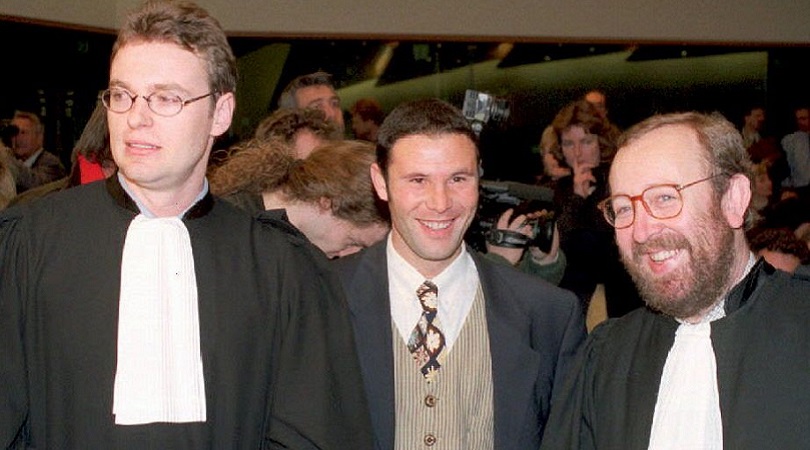
7. Jean-Marc Bosman (RFC Liège to Unattached, 1990)
A landmark moment in modern football owes everything to an otherwise inconsequential player. Bosman was playing for RFC Liège when he decided to take his employers to court over his employment rights in the summer of 1990. Dunkerque had wanted to sign him but wouldn’t meet Liège’s asking price, resulting in his club slashing his wages by a whopping 75%.
Five years and one arduous court case later, Bosman was ruled free to move at the end of his contract without money needing to change hands between parties. The age of player power had dawned.
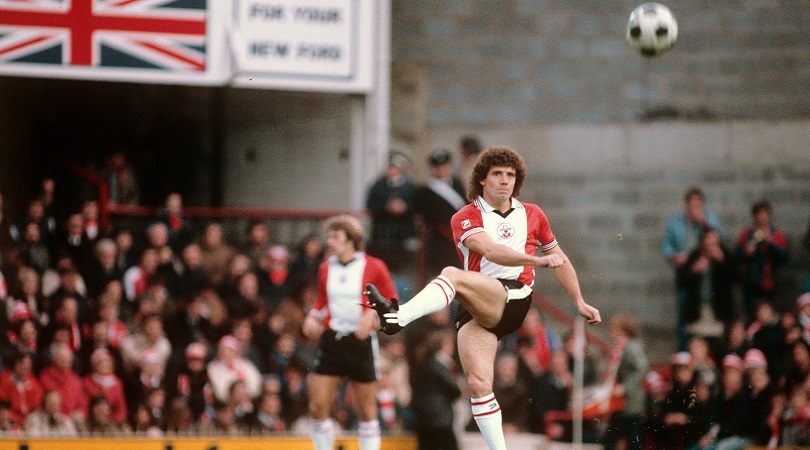
6. Kevin Keegan (Hamburg to Southampton, 1980)
Fee: £420,000
Time and management may have diminished the magnitude of Keegan as a player. By 1980 he was a Ballon d’Or-winning England captain, pop star, TV regular, brand ambassador, This Is Your Life subject, and one of very few Englishmen playing abroad.
If he were to return, it would surely be to a huge team. But Liverpool didn’t want to activate their buyback clause, and Lawrie McMenemy stunned football by wrangling him to unfashionable Southampton.
Bagging 37 in 68 games, Keegan led a flamboyant Dad’s Army of ageing stars who topped the league by January 1982, but fell away. That summer Keggy would take his goals to Newcastle.
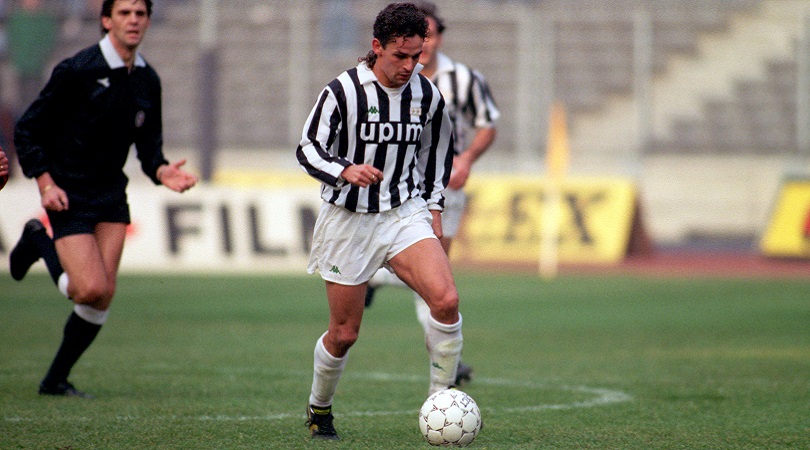
5. Roberto Baggio (Fiorentina to Juventus, 1990)
Fee: £8m
"If you can’t beat ‘em, join ‘em," goes the old adage – and Baggio did just that after failing to help Fiorentina beat Juventus in the 1990 UEFA Cup Final.
Tension between the two clubs had always been high, but not even a world record sum of £8m could appease Tuscan supporters, who spent the days following the announcement rioting.
Baggio went on to Scudetto and Ballon d’Or glory with Juventus, but never gave the Old Lady his full affection, refusing to take a penalty and pulling on a Fiorentina scarf when he was substituted during his first game back at the Stadio Artemio Franchi.
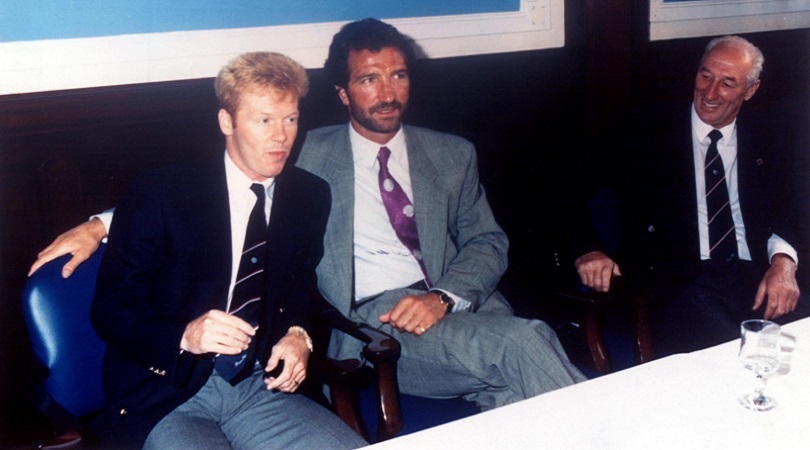
4. Mo Johnston (Nantes to Rangers, 1989)
Fee: £1.9m
Strictly speaking, ‘MoJo’ wasn't the first Catholic to sign for Rangers, but when the diehard Celtic fan put pen to paper for Graeme Souness's side in July 1989, all hell broke out in sectarian Glasgow.
Loyal Protestants vowed never to return to Ibrox, and staunch Catholics burnt effigies of Mo for promising to re-sign for them before spurning his old club at the 11th hour for their deadly rivals.
Slowly, the fuss and furore died down, and Johnston did what he did best – scored goals for his new club, who won the title in his only two seasons there before a £1.5m move to Everton in 1991.
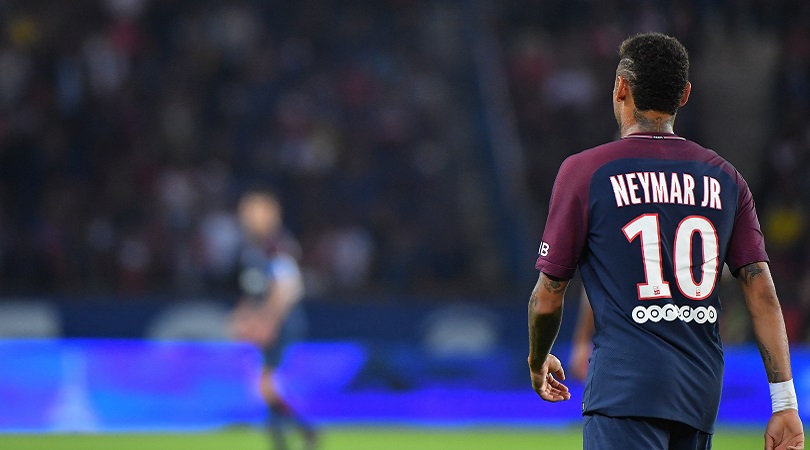
3. Neymar (Barcelona to PSG, 2017)
Fee: £198m
The Brazilian’s sensational switch from Barcelona to PSG smashed the previous world-record transfer fee – held by Paul Pogba – by an absurd £109m. Spanish sides are obliged to include a buyout clause in every player’s contract, but no one would have anticipated a club ever meeting the gargantuan figure inserted in Neymar’s deal.
Seemingly motivated by a burning desire to win the Ballon d’Or, Neymar decided to escape Lionel Messi’s shadow and become the undisputed star at the Parc des Princes. The masterplan has yet to work out.
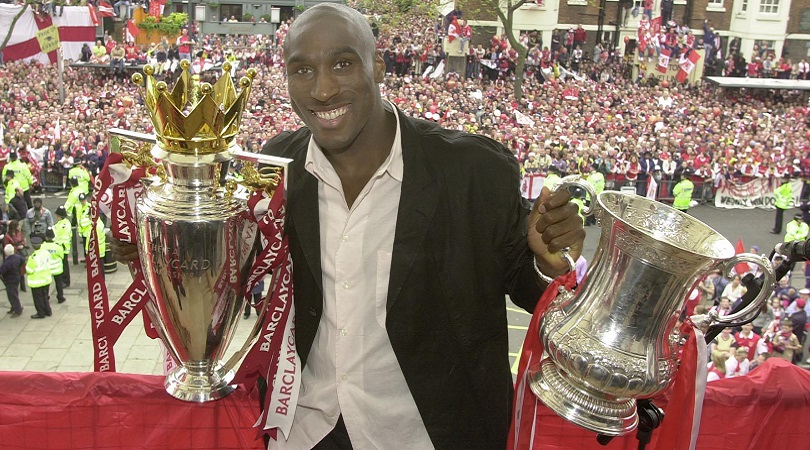
2. Sol Campbell (Tottenham to Arsenal, 2001)
Fee: Free
Upon the expiration of his Tottenham contract, the club's then-captain became the first player since Pat Jennings to move from White Hart Lane to Highbury.
To hear Campbell tell this story is strange. He wanted to win trophies, he didn't feel Tottenham were able to match his ambition, but believed that Arsenal ultimately would. Simple – and yet to this day he seems baffled by the fuss it caused.
He should never have been subjected to any chanting with racial or homophobic tones, but his blanket rejection of criticism has always been a contrary response to one of the most treacherous acts witnessed in modern football.
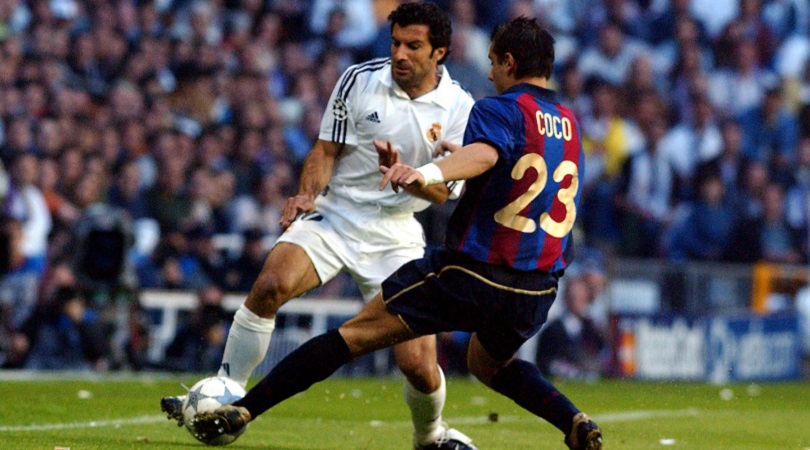
1. Luis Figo (Barcelona to Real Madrid, 2000)
Fee: £36.2m
“As a player at Barcelona, he never hid from anything,” commented one of Figo’s team-mates after his controversial £36.2m move to Real Madrid in 2000.
Brave or not, even the Portuguese was shocked at the level of vitriol directed at him when he returned to the Camp Nou in October 2001 – whenever he touched the ball, a hail of oranges, cigarette lighters and bottles (the pig’s head was thrown a year later) rained onto the pitch.
Figo’s arrival ushered in a new era of Galacticos at Real Madrid; Zinedine Zidane, Ronaldo and David Beckham all followed in the next three seasons to help make up football’s most iconic array of stars.
Greg Lea is a freelance football journalist who's filled in wherever FourFourTwo needs him since 2014. He became a Crystal Palace fan after watching a 1-0 loss to Port Vale in 1998, and once got on the scoresheet in a primary school game against Wilfried Zaha's Whitehorse Manor (an own goal in an 8-0 defeat).

